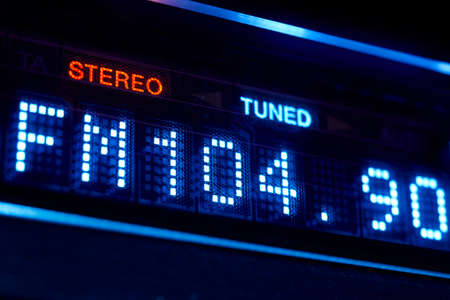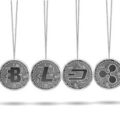1. The Evolution of Nightmares in American Pop Culture
Nightmares have long fascinated American audiences, showing up in movies, TV shows, and different forms of media. These dark themes don’t just scare us—they reveal a lot about our society’s fears and changing attitudes over time.
How Nightmares Entered Pop Culture
In the early days of Hollywood, horror movies like Dracula (1931) and Frankenstein (1931) used nightmares to symbolize unknown dangers. As decades passed, nightmares in pop culture began reflecting new fears—like nuclear war during the Cold War or technology gone wrong in the digital age.
Nightmare Themes Across Decades
| Decade | Main Nightmare Theme | Popular Example |
|---|---|---|
| 1930s-1950s | Monsters & Unknown Terrors | Frankenstein, The Twilight Zone |
| 1960s-1970s | Psycho-Horror & Societal Fears | Psycho, Rosemarys Baby |
| 1980s-1990s | Slasher Films & Suburban Anxiety | A Nightmare on Elm Street, Scream |
| 2000s-Present | Dystopia & Psychological Horror | Black Mirror, The Walking Dead |
The Role of TV and Media Influences
Television brought nightmares into American living rooms. Shows like The X-Files, Twin Peaks, and more recently, Stranger Things, use supernatural or psychological horror to reflect everyday anxieties. News media also plays a role, turning real-life events into cultural nightmares that inspire movies and series.
Cultural Shifts Reflected Through Nightmares
The way nightmares are shown in pop culture often matches what society is worried about at the time. For example, after 9/11, there was a rise in stories about invasion, fear of the unknown, and survival. As technology became more central in our lives, shows like Black Mirror started exploring the dark side of innovation.
2. Iconic Nightmare Imagery in American Cinema
American movies have played a huge role in shaping how we picture nightmares. Over the decades, filmmakers have created unforgettable nightmare sequences that not only scare us but also influence how nightmares are shown in pop culture. These scenes often become part of our collective imagination, repeating certain images and themes across generations.
Influential Horror Films and Their Nightmare Sequences
Some horror films have become classics because of their striking nightmare scenes. These moments stick with viewers long after the credits roll. Let’s look at some iconic examples:
| Movie Title | Year | Nightmare Sequence | Lasting Impact |
|---|---|---|---|
| A Nightmare on Elm Street | 1984 | Freddy Krueger haunting teens in their dreams | Brought the fear of dreams to mainstream audiences; Freddys glove became a symbol of nightmares |
| The Shining | 1980 | Torrance family’s disturbing visions in the haunted hotel | Redrum, twin girls, and blood elevator scenes became visual shorthand for psychological terror |
| Psycho | 1960 | Shower scene as a waking nightmare | The use of quick cuts and screeching music influenced countless future horror films |
| Get Out | 2017 | The “Sunken Place” sequence, trapping the character in his own mind | Became a cultural reference for feeling powerless and trapped, often used in memes and discussions about society |
| The Exorcist | 1973 | Regan’s possession and hallucinations blurring reality and nightmare | Pushed boundaries for depicting supernatural horror; inspired later exorcism-themed movies and shows |
Recurring Visual Motifs in Nightmare Scenes
Certain images and ideas show up again and again in American nightmare movies, creating visual motifs that fans instantly recognize. Here are some common examples:
- Distorted Reality: Scenes where normal settings suddenly twist into something frightening (like shifting hallways or melting walls).
- The Monster or Villain: Recurring figures like Freddy Krueger or Michael Myers who appear in dreams or as symbols of fear.
- Losing Control: Characters unable to move, speak, or wake up, representing helplessness—one of the most common nightmare feelings.
- Sensory Overload: Loud noises, flashing lights, or sudden silence to heighten fear and confusion.
- Doppelgängers: Seeing oneself or loved ones act out of character or become threatening.
The Influence on American Pop Culture and Beyond
The way American cinema presents nightmares has influenced not just other movies but also TV shows, video games, comic books, and even advertising. The most memorable nightmare imagery from these films is often referenced or parodied in all kinds of media. In fact, some visuals—like Freddy’s striped sweater or the twins from The Shining—are now cultural icons that everyone recognizes, whether they’ve seen the original movie or not.

3. Nightmares in Television: From Anthologies to Streaming
Television has always been a powerful way to bring nightmares into American living rooms. Over the years, TV shows have used scary dreams and nightmarish themes to keep viewers on the edge of their seats. Let’s take a look at how this trend has evolved from classic anthology series to today’s binge-worthy streaming hits.
The Classic Anthology Era
In the 1950s and 1960s, anthology shows like The Twilight Zone and Alfred Hitchcock Presents set the stage for nightmare-inspired storytelling on television. These series presented a new story each week, often diving deep into surreal, dreamlike scenarios or exploring fears that felt like waking nightmares. For many Americans, these episodes were their first taste of psychological horror on TV.
Anthology Series Examples
| Show | Years Aired | Nightmare Themes |
|---|---|---|
| The Twilight Zone | 1959-1964 | Bizarre realities, unsettling dreams, twisted morality tales |
| Alfred Hitchcock Presents | 1955-1965 | Murder, paranoia, dream logic, psychological suspense |
| Tales from the Crypt | 1989-1996 | Supernatural horrors, gory nightmares, dark humor |
The Rise of Serialized Nightmares
As TV evolved, so did its approach to nightmares. Shows like Twin Peaks in the 1990s blended soap opera with surreal horror, using dream sequences and strange imagery to create an ongoing sense of dread. Nightmares became more than just one-off stories—they became part of larger mysteries that kept audiences guessing week after week.
Modern Streaming Sensations
Today, streaming platforms like Netflix and Hulu have taken nightmare storytelling to new heights. Series such as Stranger Things, The Haunting of Hill House, and American Horror Story use nightmarish visions, monsters from dreams, and terrifying alternate realities as major plot points. These shows often blend nostalgia for earlier TV eras with modern special effects and storytelling techniques.
| Streaming Show | Main Nightmare Elements | Cultural Impact |
|---|---|---|
| Stranger Things | The Upside Down (a nightmarish parallel world), creatures from nightmares, psychic visions | Sparked 80s nostalgia; made supernatural horror mainstream again for younger generations. |
| The Haunting of Hill House | Dread-filled dream sequences, haunted memories, family trauma as horror fuel | Brought emotional depth to haunted house stories; discussed grief and fear through nightmares. |
| American Horror Story | An anthology format with different nightmare themes each season: witches, haunted hotels, cults, etc. | Pushed boundaries of horror on TV; inspired memes and pop culture references. |
Why Do Nightmares Work So Well on TV?
Nightmares make for great television because they tap into universal fears—being chased, feeling powerless, or losing control. TV lets creators use music, visuals, and cliffhangers to build suspense and keep people coming back for more. As technology and storytelling evolve, American TV continues to find new ways to turn our worst dreams into unforgettable entertainment.
4. Media Influence: Nightmares in Advertising and Pop References
Nightmare imagery is not just found in movies and TV shows. In America, advertising, pop music, and other forms of media also play a big role in spreading scary or unsettling images that become part of everyday culture. These influences help turn nightmare themes into something familiar—even trendy—for people of all ages.
Advertising: Selling with a Scare
Advertisers often use nightmare-related visuals to grab attention and make their products memorable. Whether it’s a spooky Halloween campaign or a clever commercial using monsters or surreal dreamscapes, these ads can make frightening images feel fun or even cool. For example, brands might use zombies or ghosts to promote snacks, drinks, or even cars during the fall season. This approach connects nightmares with excitement and curiosity instead of just fear.
Examples of Nightmare Imagery in U.S. Advertising
| Brand/Product | Type of Nightmare Imagery | Purpose/Effect |
|---|---|---|
| Snickers (Halloween Ads) | Zombies, witches, haunted houses | Adds humor and fun to the brand, especially for kids |
| Geico Insurance | Campy horror movie monsters | Makes insurance commercials more entertaining and memorable |
| Mountain Dew (2021 Super Bowl Ad) | Haunted mansion setting with eerie characters | Catches viewers’ attention during major events |
Pop Music: Nightmares on the Radio
Nightmare themes aren’t just for visuals—they’re popular in music too. Many American artists use lyrics and music videos inspired by dark dreams or fears. From Michael Jackson’s “Thriller” to Billie Eilish’s haunting songs, these tracks mix scary ideas with catchy beats, making nightmares part of the mainstream soundscape.
Popular Songs with Nightmare Themes
- Michael Jackson – “Thriller”: Famous for its zombie dance scene and spooky storyline.
- Billy Eilish – “bury a friend”: Lyrics explore anxiety and strange dreams.
- Eminem – “Monster”: Talks about battling inner demons.
Other Media: Nightmares Everywhere
The influence goes beyond ads and music. Comic books, video games, fashion trends, and even sports mascots sometimes use nightmare-inspired designs. For example, superhero comics often feature villains drawn from nightmare archetypes—like scarecrows, clowns, or shadowy figures—which keep these images alive in pop culture. Video games like “Five Nights at Freddy’s” are built entirely around nightmare scenarios that fans love to experience and share online.
Everyday Nightmare References in American Culture
| Media Type | Example | Cultural Impact |
|---|---|---|
| Comics | The Joker (Batman) | Became an iconic villain representing chaos and fear |
| Video Games | Five Nights at Freddy’s | Sparked a huge fandom around creepy animatronics and survival horror themes |
| Fashion & Merchandising | T-shirts with skeletons, ghosts, or horror movie icons | Makes nightmare imagery part of everyday style, especially around Halloween |
The result is that nightmare imagery has become a normal—and sometimes even playful—part of life in America. Thanks to media influence, what was once scary can now be seen everywhere from commercials to concerts to clothing stores.
5. The Lasting Impact: Nightmares and Contemporary American Society
Nightmares as a Mirror of American Culture
Nightmares in movies, TV, and other media are more than just scary stories—they often reflect the collective worries and anxieties of society. Whether it’s classic horror films like “A Nightmare on Elm Street” or popular shows like “Stranger Things,” these nightmares mirror real-life fears about safety, the unknown, or changing social norms. When Americans watch these stories, they see their own concerns played out in dramatic and creative ways.
How Nightmares Influence Creativity and Art
Nightmare imagery has inspired countless artists, writers, and filmmakers. From graphic novels to Halloween costumes, American pop culture is full of creative works influenced by nightmare themes. This inspiration can be seen in:
| Medium | Example | Impact |
|---|---|---|
| Movies | “Get Out” (2017) | Sparks conversations about race and social fear |
| TV Shows | “American Horror Story” | Presents new takes on old fears each season |
| Music Videos | Beyoncé’s “Haunted” | Uses nightmare visuals to express emotion |
| Art & Comics | The Sandman series | Merges dreams with real-life issues in graphic art |
Ongoing Social Fears and Nightmares in Media
The nightmares we see in American pop culture often adapt to current events and changes in society. For example, during times of economic uncertainty or political tension, horror movies might focus on themes of invasion or chaos. In recent years, media has explored nightmares related to technology, climate change, and isolation—topics that are top-of-mind for many Americans.
The Cycle of Influence: Society and Media Nightmares
This connection between nightmares in the media and real-world fears creates a cycle: society shapes the nightmares we see onscreen, and those nightmares can then influence how people think about their own lives. In this way, nightmares continue to play an important role in shaping American cultural identity—reminding us of our fears but also inspiring creativity and conversation about what matters most today.


